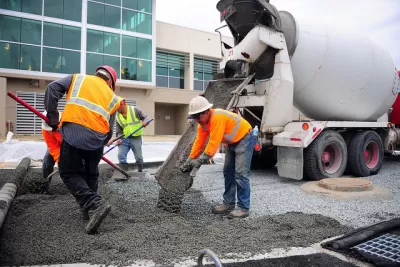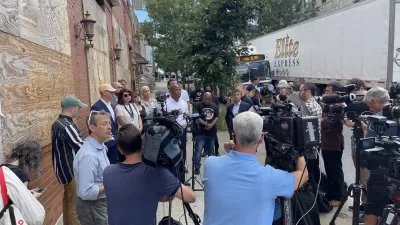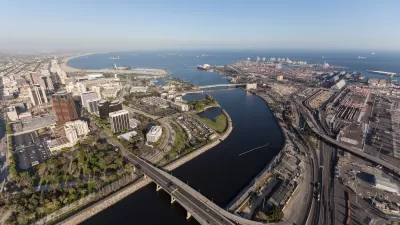Mayors around the country are pledging to bolster infrastructure projects with new federal funding, generate economic growth, and support the most vulnerable residents.

The National League of Cities has released its annual State of the Cities report, which highlights infrastructure, economic development, budgets and management, and public safety” as top priorities, based on an analysis of 60 mayoral speeches. Danielle McLean outlines the report’s findings in an article for Smart Cities Dive.
Researchers found that cities are focused on utilizing an influx of federal funds through the American Rescue Plan that passed last year, as well as the forthcoming infusion of money via the bipartisan infrastructure law that passed in the fall, the report stated. Mayors also focused on working through employment pressures, while trying to ensure their residents are treated equitably.
Mayors expressed more optimism this year than last year, when funding for infrastructure and economic development was more uncertain. “In the latest report, 36% of the mayoral speeches NLC analyzed had ‘significant mention’ of infrastructure. Recognizing the need for maintenance and spending on roads, bridges, broadband and water and sewer systems, local governments were preparing to apply for, receive and utilize the influx of federal and state grants they have received or will soon be available, the report states.”
Additionally, “Economic development was central in mayoral speeches, with 33% significantly mentioning it. In an effort to generate economic growth, mayors highlighted plans to invest in downtown developments and commercial real estate projects. They also mentioned lifting up residents most impacted financially by the pandemic through community development, entrepreneurship initiatives and other strategies, the report states.”
Mayors also prioritized leadership and city management, as well as public safety and criminal justice reform.
FULL STORY: Mayors’ top 4 priorities in 2022: NLC’s State of the Cities report

Study: Maui’s Plan to Convert Vacation Rentals to Long-Term Housing Could Cause Nearly $1 Billion Economic Loss
The plan would reduce visitor accommodation by 25,% resulting in 1,900 jobs lost.

North Texas Transit Leaders Tout Benefits of TOD for Growing Region
At a summit focused on transit-oriented development, policymakers discussed how North Texas’ expanded light rail system can serve as a tool for economic growth.

Why Should We Subsidize Public Transportation?
Many public transit agencies face financial stress due to rising costs, declining fare revenue, and declining subsidies. Transit advocates must provide a strong business case for increasing public transit funding.

How to Make US Trains Faster
Changes to boarding platforms and a switch to electric trains could improve U.S. passenger rail service without the added cost of high-speed rail.

Columbia’s Revitalized ‘Loop’ Is a Hub for Local Entrepreneurs
A focus on small businesses is helping a commercial corridor in Columbia, Missouri thrive.

Invasive Insect Threatens Minnesota’s Ash Forests
The Emerald Ash Borer is a rapidly spreading invasive pest threatening Minnesota’s ash trees, and homeowners are encouraged to plant diverse replacement species, avoid moving ash firewood, and monitor for signs of infestation.
Urban Design for Planners 1: Software Tools
This six-course series explores essential urban design concepts using open source software and equips planners with the tools they need to participate fully in the urban design process.
Planning for Universal Design
Learn the tools for implementing Universal Design in planning regulations.
City of Santa Clarita
Ascent Environmental
Institute for Housing and Urban Development Studies (IHS)
City of Grandview
Harvard GSD Executive Education
Toledo-Lucas County Plan Commissions
Salt Lake City
NYU Wagner Graduate School of Public Service





























